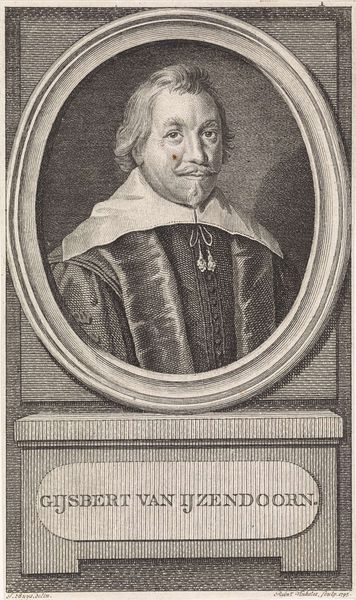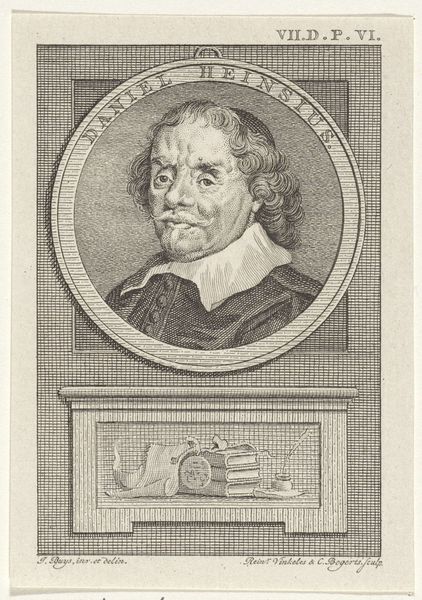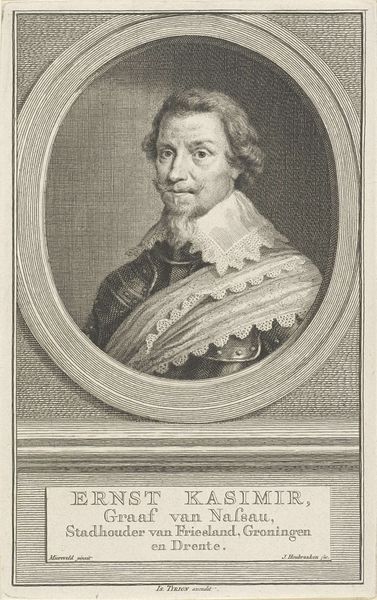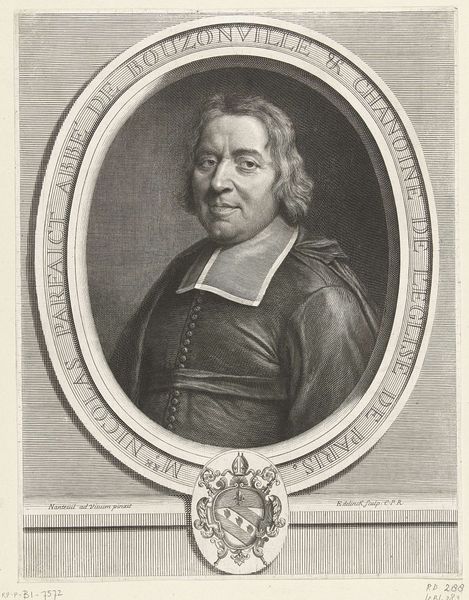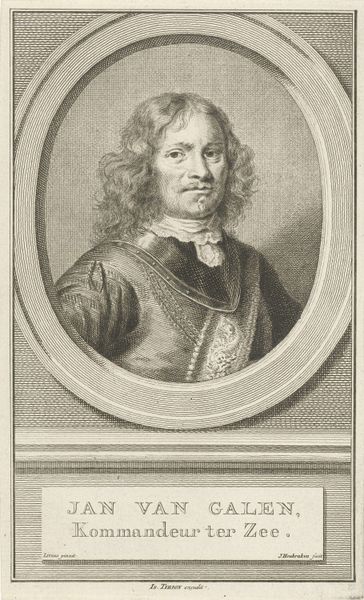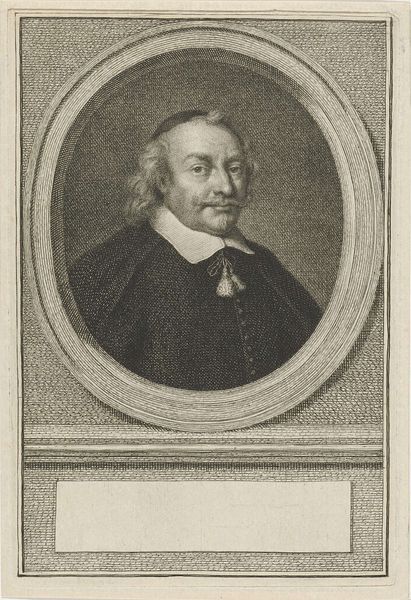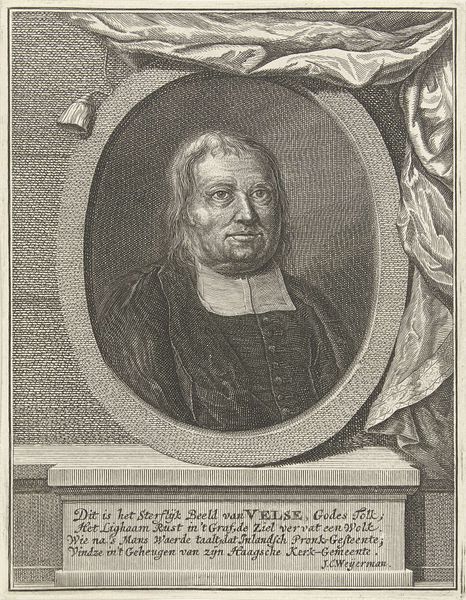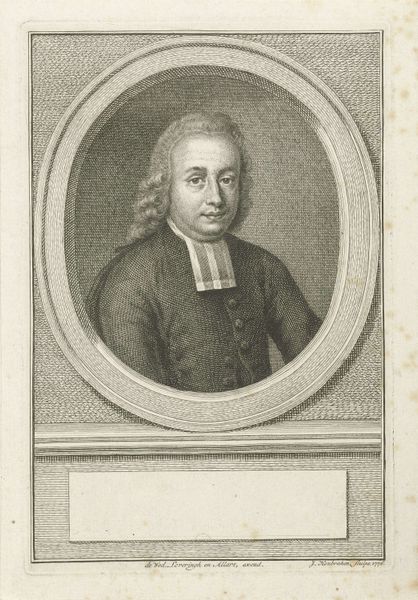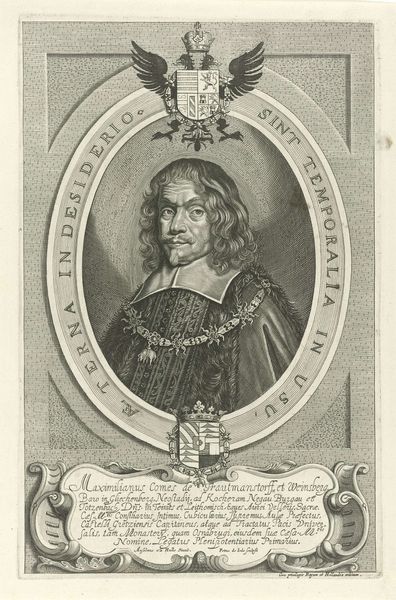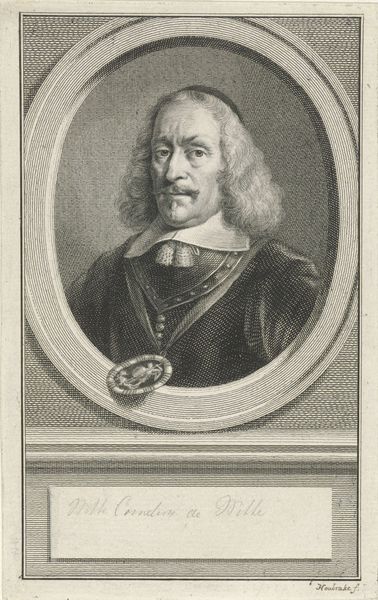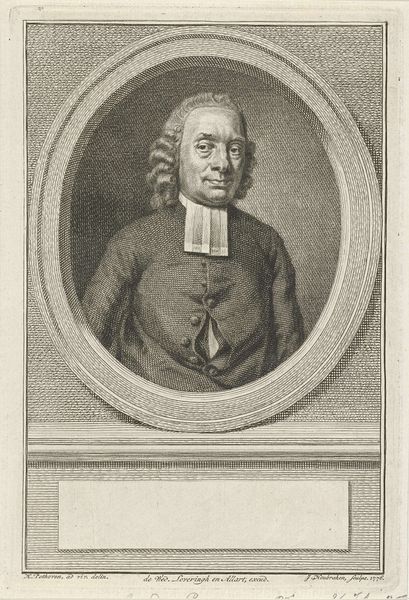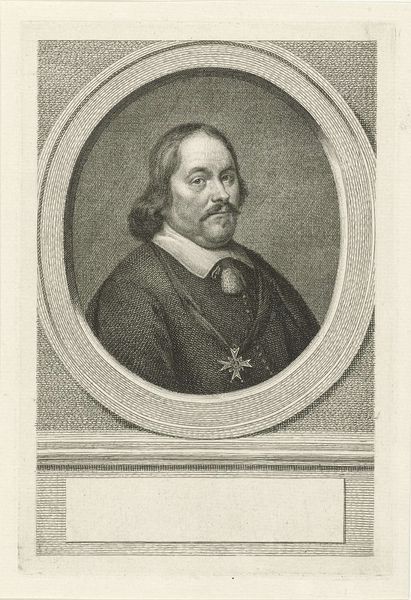
drawing, print, paper, engraving
#
portrait
#
drawing
#
baroque
# print
#
old engraving style
#
paper
#
engraving
Dimensions: height 183 mm, width 114 mm
Copyright: Rijks Museum: Open Domain
Curator: Here we have Jacob Houbraken's portrait of Maarten Harpertszoon Tromp, dating from between 1749 and 1759. This striking engraving is rendered on paper in the baroque style. Editor: There's an immediate formality. The starkness of the print combined with the framing creates a sense of distance and power, doesn’t it? He appears every inch the stern admiral. Curator: Absolutely. Houbraken operated during a period where printmaking served a crucial role in disseminating imagery and shaping public perception. Consider that Tromp, as a celebrated naval hero, was practically a symbol of Dutch maritime power, particularly during its Golden Age. His image would have carried immense symbolic weight. Editor: And it’s important to think about who this imagery served. Were these images circulating amongst the working classes, the sailors who were experiencing the direct impacts of colonial power, or was it targeted at a different kind of viewership? Who has access to the image, and what do they then do with it? Curator: A crucial point. These prints would have been widely circulated amongst the educated elite, reinforcing established power structures. Engravings like these acted as a form of historical record, codifying figures like Tromp within the national narrative. We see the influence of Dutch Classicism through the clean, refined lines that define his face, meant to convey both his strength and inherent virtue. Editor: What I find compelling is how even within that formal visual language, the subtle details still speak volumes. Note the way he isn’t idealized in any sense. There is such close attention paid to the creases on his forehead, or around his mouth—lines of someone who has lived, who has actively commanded fleets. And this brings forth an interesting dimension in understanding power: one gained through effort, not merely given. Curator: Indeed, it reminds us that portraits are not just records but carefully constructed narratives. Editor: And recognizing those constructions lets us question the stories they tell, whose voices are amplified, and who gets left out of that history. Curator: Thinking about it now, engaging with artwork, regardless of the era, encourages such crucial reflection about representation, doesn't it? Editor: It really does—it is the power of interrogating art!
Comments
No comments
Be the first to comment and join the conversation on the ultimate creative platform.
